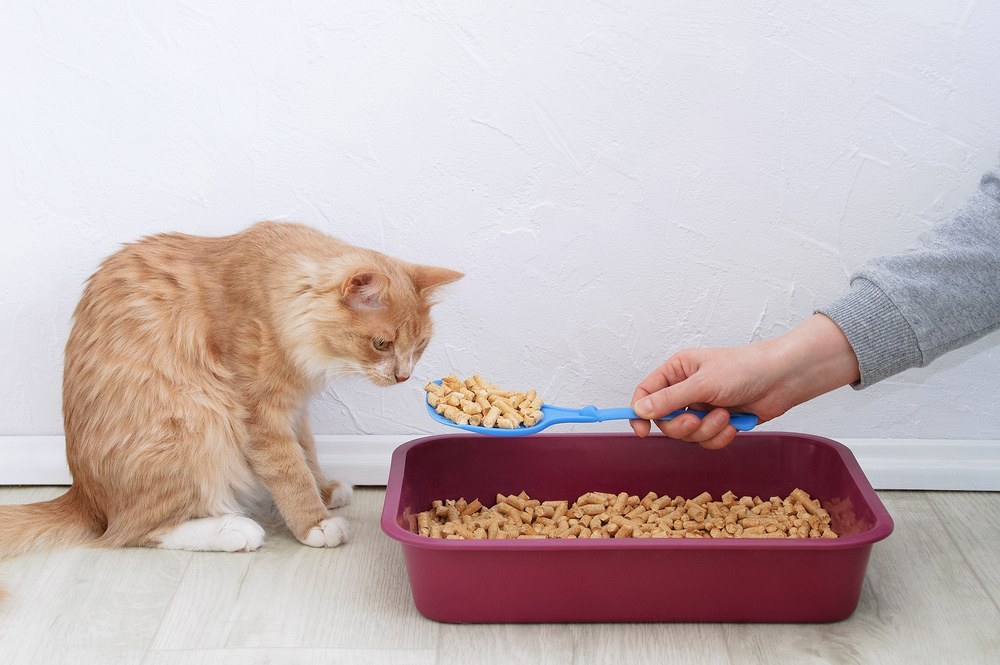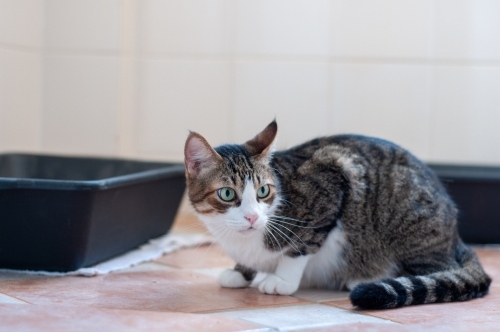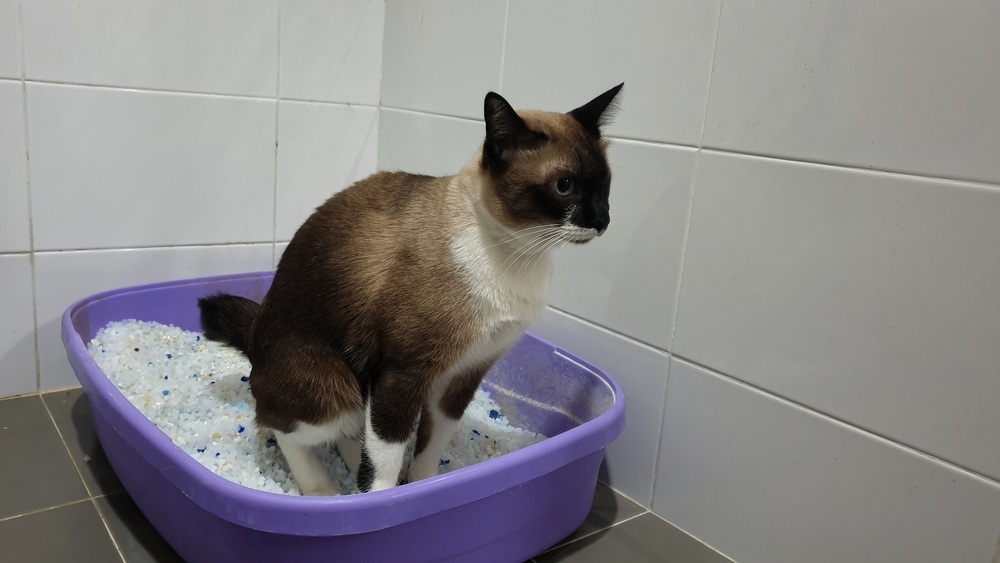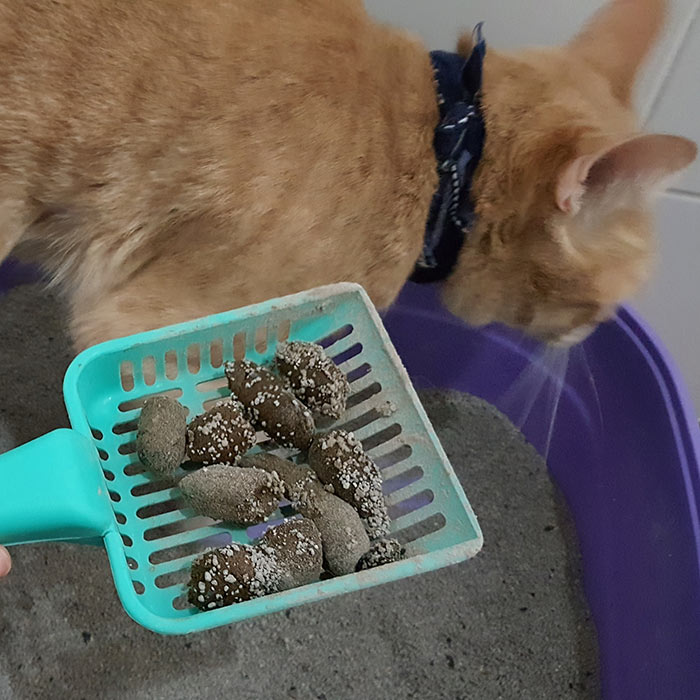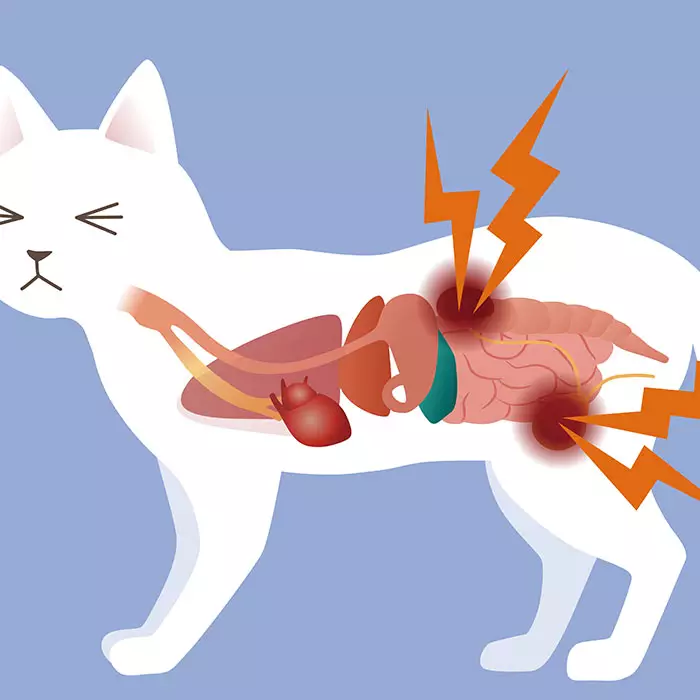Litter tray aversion in cats
What is litter tray aversion?
Litter tray aversion describes a cat’s of avoidance of the litter tray, leading to the undesirable behaviour of toileting outside of the litter tray. There are numerous reasons why litter tray aversion may occur in a cat that has previously used the litter tray without any issues.
 The underlying issue may be behavioural, for e.g., the cat doesn’t like the type of litter used, or psychological, for e.g., the cat was frightened while in the litter tray and now associates the tray with feeling fearful.
The underlying issue may be behavioural, for e.g., the cat doesn’t like the type of litter used, or psychological, for e.g., the cat was frightened while in the litter tray and now associates the tray with feeling fearful.
Cats often change their toileting behaviours if they have issues with their litter tray. Once the cat begins to avoid the litter tray, it may then develop an alternate preference for toileting, such as urinating on a particular surface or in a certain location, and the problem can become a chronic one.
Symptoms of litter tray aversion in cats
It is not always straight-forward to determine if a cat is toileting outside of the litter tray because of a litter tray aversion or for other reasons, such as an underlying medical condition for the behaviour.
Symptoms of litter tray aversion may include:
- Inconsistent use of the litter tray
- Urinating outside the litter tray occurs on a horizontal surface (i.e. urine marking or spraying is not the issue)
- A preference for toileting on a particular surface or texture (carpet, tiles, garden bed etc.)
- The cat enters the box but leaves very quickly, sometimes before using it or before toileting is completed.
- Crying when needing to toilet
- Refusing to bury the waste in the tray
- Perching on the edge of the tray without touching the litter
- Eliminating right near the tray.
Causes of litter tray aversion in cats
Cats may avoid toileting in the tray if they have issues with their litter tray, which then leads to house soiling. For example, they may not like the type of litter tray, the litter material or where the litter tray is located. Other possible causes include feelings of stress and anxiety that the cat has come to associate with the litter tray.
The following situations may lead to an aversion to the litter tray:
- Two or more cats share a litter tray
- A new brand of litter is used
- The box is not changed frequently
- The cat has a negative experience in the box that caused her pain or fright
- An animal or child is bothering the cat in the box
- Another cat in the household is a bully and/ or controls access to resources such as food, rest areas, or the litter tray
- The litter box is located in a heavy household traffic area
- The litter box is located near a noisy appliance, such as a clothes dryer
- The cat has discovered a new surface to toilet on which she prefers to her normal litter (e.g. glossy tiles, fabric, carpet, wood etc)
- The cat has discovered a new and more likable spot to toilet (e.g. it may be more private or more comfortable)
![]()
Dealing with litter tray aversion in cats
Countering litter tray aversion entails optimising conditions relating to the tray.
Cats can develop an aversion to some aspect of their tray, which may concern its hygiene, size, shape, type, litter material or even its location, which causes them to avoid it and toilet elsewhere.
Cats with litter tray aversion often require re-training to the tray. As a first step, the litter tray situation must be improved as best as possible. You may need to purchase several types of trays and several types of litter in order to determine which combination your cat likes best.
Recommendations for overcoming litter tray aversion include:
Improve the hygiene, maintenance and cleaning of the tray
While regular litter tray maintenance is critical for most cats, some cats are extremely fussy about their toileting hygiene. Some cats refuse to use a box containing any urine or faeces whatsoever, and it is necessary to keep their trays scrupulously clean. This may entail changing the litter several times a day or investing in a self-cleaning litter tray.
A proper clean of the tray should be done at least weekly by throwing out all the contents and scrubbing the tray with baking soda or unscented detergent and boiling water, then rinsing and drying it well (a cat may dislike the odour of the cleanser or disinfectant and refuse to use it for this reason). It’s a good idea to replace the tray after several years of use, or if it is smelly or cracked.
What type of litter and what else is in the tray?
If your cat appears to have taken a dislike to her litter, or you’ve recently changed brands, this could explain why she’s chosen to toilet elsewhere. The choice of litter material is important and is very individual for each cat. Some cats prefer clumping litter and some non-clumping, some prefer fine and some coarse substrate, while some prefer absorbent and some non-absorbent materials. Some cats need lots of material and some only a little. As a guide, many cats prefer fine-textured, unscented, clumping litter and natural substrates such as sand or soil. Most cats dislike plastic tray liners.
If you need to switch brands, do so gradually, adding small amounts of new litter to the old. You could also try putting a few clean trays side by side, each with a different type of litter, to see which one your cat prefers. Experiment with different depths of litter as well. Take note of which litter trays get used the most and choose that depth of litter for most of the boxes. You could also try using a litter additive, which is a herbal product designed to return the cat to the tray.
